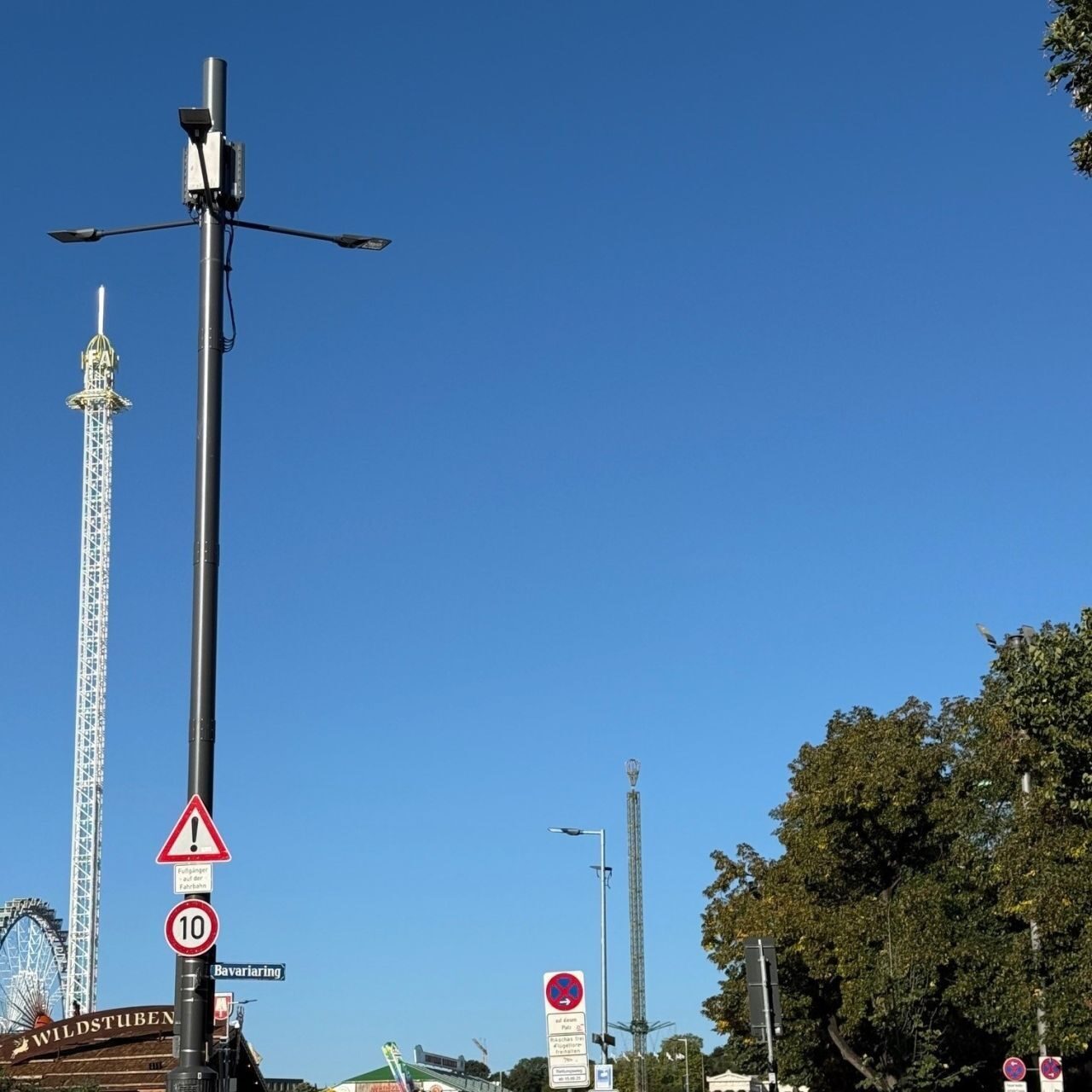From music festivals to sporting finals, mass participation events are an economic and cultural lifeline for cities. But in an increasingly digital world, they also place enormous strain on public infrastructure – particularly mobile networks.
As public spaces fill with eventgoers capturing and sharing moments, emergency services requiring resilient communication, and organisers relying on real-time systems, mobile connectivity becomes just as vital as transport or sanitation. Without the right infrastructure, congestion isn’t just on the roads – it’s in the airwaves.
The scale of the challenge is only growing. During one of the opening matches of UEFA Euro 2024, Telefónica Germany recorded over one million gigabytes of data traffic per hour on its O2 network* – a reminder that today's events demand more than crowd control barriers and temporary signage. They require robust, high-performance digital infrastructure.
SUPPORTING MAJOR EVENTS WITH SMART, INTEGRATED INFRASTRUCTURE
At Oktoberfest 2025, more than 41,000 gigabytes of mobile data flowed through Telefónica’s O2 network during the opening weekend alone – more than the entire 18-day festival carried in 2017.
To help meet this unprecedented demand, the City of Munich prioritised mobile coverage as part of its event preparations. Working in collaboration with 5G Synergiewerk and Telefónica, CU Phosco delivered six Connected Urban smart poles near key subway stations and entrances, transforming critical public zones into high-performance digital corridors.
The impact was immediate. Just five of the new smart poles carried around 5 terabytes of data in two days, covering over 10% of the Oktoberfest’s peak traffic and matching the performance of some traditional rooftop sites. As Telefónica put it: “small light, big impact”.
This deployment builds on projects across Augsburg, Cologne, Frankfurt, Hannover and Würzburg, where Connected Urban poles are helping local authorities boost mobile performance, public safety, and digital services without adding visual clutter or compromising streetscapes.
COLLABORATION AND RAPID DEPLOYMENT
The Munich smart poles were deployed in partnership with German infrastructure specialists and local authorities. CU Phosco supplied the equipment and expertise, working alongside Telefónica to ensure the solution integrated seamlessly into its existing network, while 5G Synergiewerk provided on-the-ground project management.
The first installation was unveiled with Telefónica executives and city officials present, reflecting the importance of future-ready infrastructure in modern urban planning.
Keith Henry, General Manager and Telecommunications Product Manager at CU Phosco, said:
“This project continues the momentum of Connected Urban across Europe. The deployment in Munich shows how smart lighting infrastructure can play a vital role in creating safer, more connected urban environments. We’re proud to work alongside Telefónica and 5G Synergiewerk to support cities in their vision for smarter streets.”
CONNECTED URBAN SMART POLE
Each Connected Urban smart pole is a multifunctional, modular solution that combines 4G/5G radio equipment, street lighting, and optional add-ons like CCTV or public address systems. By housing multiple services in one compact unit, cities can reduce street clutter and simplify installations.
Designed with both engineers and architects in mind, the poles feature a sleek profile and modular body. Heights range from 11.9 to 13.9 metres, with tri-sector antenna enclosures at the top. The base includes dual 900mm maintenance doors for easy access and future upgrades.
BENEFITS BEYOND EVENTS
While deployed in time for Oktoberfest, the smart poles deliver long-term value for Munich, ensuring surrounding areas are equipped to handle everyday peak loads from commuters, emergency services and public gatherings.
As Matthias Sauder, Director Networks at O2 Telefónica, commented:
“The premiere of our 5G streetlights shows how we can use innovative solutions to ensure a stable network experience at major events and in cities.” *
The use of smart poles for large-scale events is part of a broader shift in how cities approach infrastructure, with deployments now growing across Europe, the UK and beyond.
WHY THIS MATTERS FOR CITIES EVERYWHERE
As mobile coverage demands grow – from major sporting tournaments to cultural celebrations – digital infrastructure must be part of the conversation. The Connected Urban model offers a blueprint for delivering 5G connectivity, enhanced safety, and multifunctional streetscapes, all without compromising on design.
Keith Henry sees this as a major opportunity: “With increasing pressure on space and rising connectivity expectations, the Connected Urban smart pole is an ideal solution for modern cities worldwide. From sports events to seasonal festivals, our infrastructure helps authorities deliver high-speed mobile connectivity, boost safety, and reduce street clutter in one engineered solution.”
For councils, telecoms operators, and infrastructure partners, it’s a chance to think differently about street lighting poles – not as static assets, but as dynamic platforms for smarter, safer, better-connected cities.
* Telefónica Germany records over 1 mln GB data traffic per hour during first Euro 2024 match – Telecompaper
** O2 Telefónica data usage at Oktoberfest 2025 – O2 Telefónica Press Release, 23 Sept 2025
